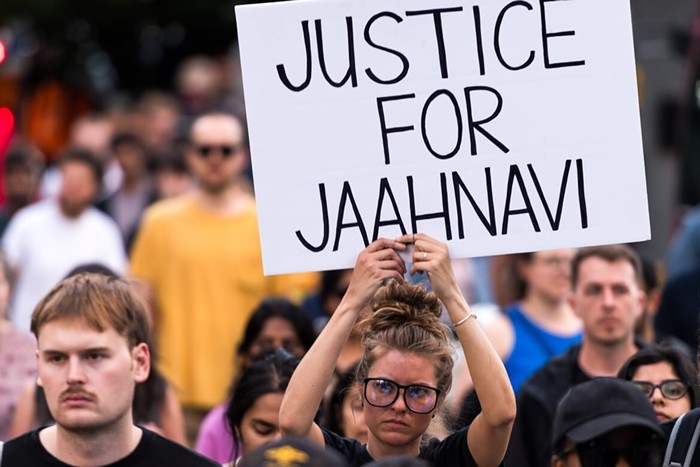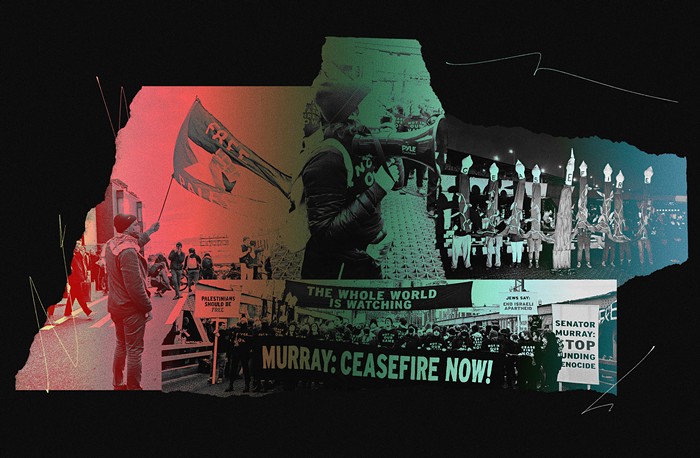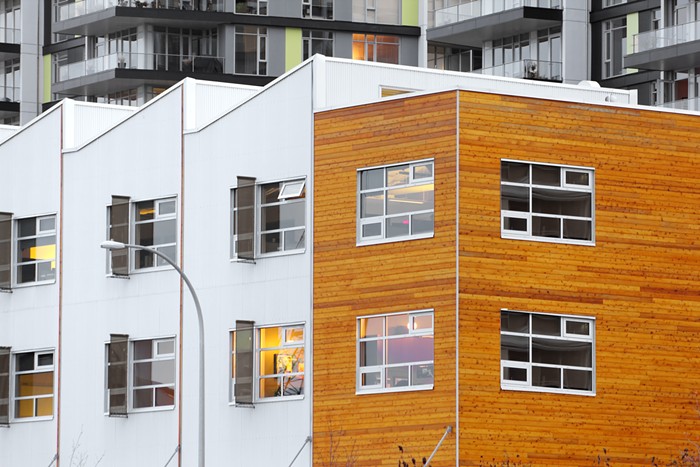On August 29, 2014, a young attorney named Sher Kung died in downtown Seattle when a truck struck her as she biked to work on Second Avenue. She left behind a wife and infant daughter.
Antoine McNamara, a downtown attorney and resident of Beacon Hill, remembers riding past his friend's body on his way to work on the day that Kung died. A tarp was laid over it.
Dozens of people held a memorial ride to remember Kung. A shrine, including a "ghost bike" painted white and bouquets of flowers, appeared at the corner where she died.
City officials moved fast. Three months earlier, Mayor Ed Murray had directed engineers and planners to jump-start the construction of a protected bike lane on the street, using easy-to-install plastic pylons. Ten days after Kung's death, Murray inaugurated the new bike lane. A literal death trap was transformed into vastly safer bidirectional pathway for cyclists with a physical barrier separating them from vehicular traffic.
McNamara said he felt like he heard all the right things from the city after Kung's death. A mayoral spokesperson said at the time that the protected bike lane likely would have saved Kung's life. McNamara agrees.
He stayed engaged as last July the Seattle Department of Transportation (SDOT) unveiled the Center City Bike Network plan to improve downtown safety and promised to begin building it by 2016. But city officials said they needed funding. So McNamara went out and advocated for last fall's $930 million Move Seattle levy. Cascade Bicycle Club, Seattle Neighborhood Greenways, and bike advocates from around the city worked to pass the levy—and 58 percent of Seattle voters approved it.
Then last month, cyclists got distressing news about the city's plan for the next five years of bike safety projects. Instead of the expected infusion of cash into bike infrastructure following the passage of the levy, which was sold as a prime funding measure for the city's Bicycle Master Plan, there would be significant cuts.
Over the coming five years, the city's new implementation plan for the overall Bicycle Master Plan cuts the five-year total of protected bike lanes by nine miles and cuts neighborhood greenways by 20 miles. Two years after Kung's death, the Second Avenue protected bike lane remains stranded, disconnected from other protected bike lanes—though its plastic pylons have since been upgraded to planter boxes. And SDOT, to the dismay of cyclists, decided to delay the build-out of a downtown bicycle network—the Center City Bike Network—until it finishes collecting data about downtown bus traffic.
"It feels like a bait and switch," McNamara said. "It doesn't feel like it's prioritizing what matters."
City officials seem to have forgotten how dramatically life-saving protected bike lanes can be—including immediate, unglamorous quick-fix bike lanes on dangerous streets.
City council members Mike O'Brien and Rob Johnson are urging Murray's SDOT to get back to doing what it did with Second Avenue: implementing simple and swift interventions that protect the lives of cyclists, and then improve on them over time.
At a recent council hearing, Johnson told SDOT officials he wanted the department to take more "immediate-term steps" to make cycling safer in key areas, citing the testimony of dozens of commuters and families who had biked into City Hall holding #WeCan'tWait signs. One man said he knew of four people in his North Seattle neighborhood who'd been hit by cars in the previous week, including a mother and child.
"We've gotta be able to have some rapid responses," Johnson said.
O'Brien talked about making "less expensive investments... maybe on a temporary basis, to deliver the safety that's necessary so people can make the connections to downtown sooner. I think there are opportunities to pilot something, like we did on Second Avenue."
When it comes to downtown, the Seattle Bike Blog has some specific suggestions about where SDOT can start connecting the Second Avenue bike lane to the rest of the city, starting now, if Murray wants to take "bold, fast action" like he did in 2014: North to Dexter and the new Westlake cycle track, south to Dearborn, east to Broadway, and west to the Alaskan Way Trail entrance at King Street.
In a statement, SDOT threw cold water on the ideas, saying only that the agency would install them "where we can... but these opportunities are becoming fewer as safety concerns often necessitate new signals, raised driveways, and more substantial buffers."
At a May 4 gathering of the Seattle Bicycle Advisory Board, McNamara recounted the experience of seeing his friend's dead body in the road and then pleaded with the city officials in the room to move faster. He talked about the expedited Second Avenue bike lane construction that had come so close to saving his friend's life: "Ten days delay made the difference between life and death for her... She would still be alive and that 7-month-old girl would still have her mom."
McNamara said he'd take a "pilot project" or quick safety upgrade any day over more delays or gleaming new planters. "Now it's 'We need to do more planning,'" said McNamara. "I get it, that we need to figure out where the buses go and stuff. But 10 days made the difference. That was life or death. And we're talking about pushing [the downtown bike plan] off two years?"
McNamara paused, his voice quavering.
"Just make a safe place for people to ride their bikes!" he said. "The 'Seattle Process' can really have impacts on... on real people's lives."
This article has been updated since its original publication.



















